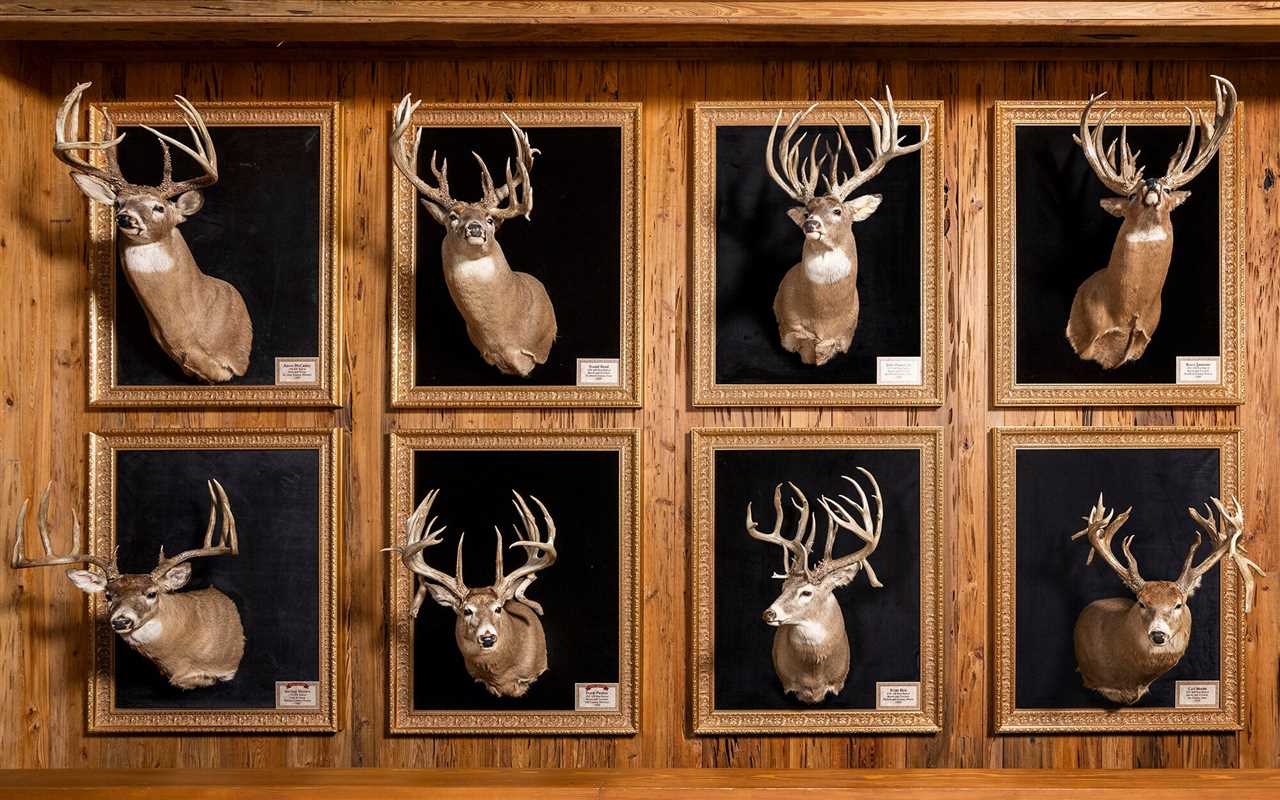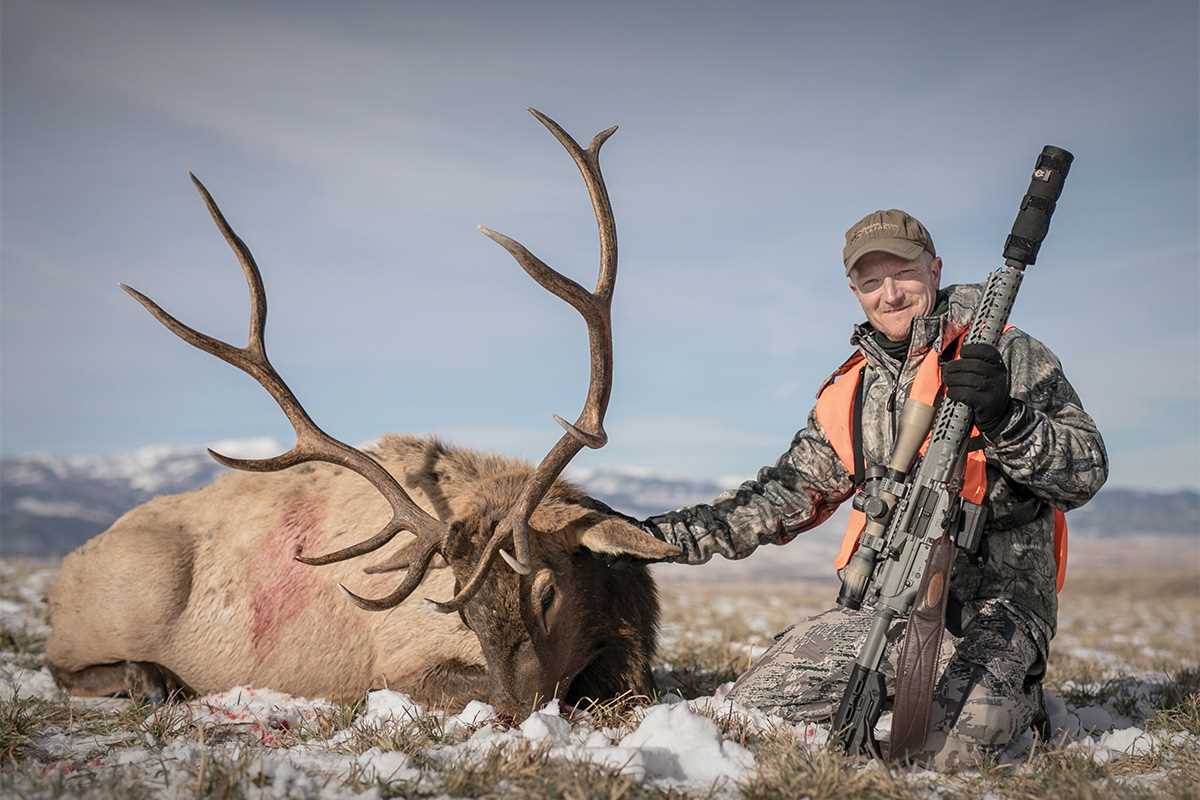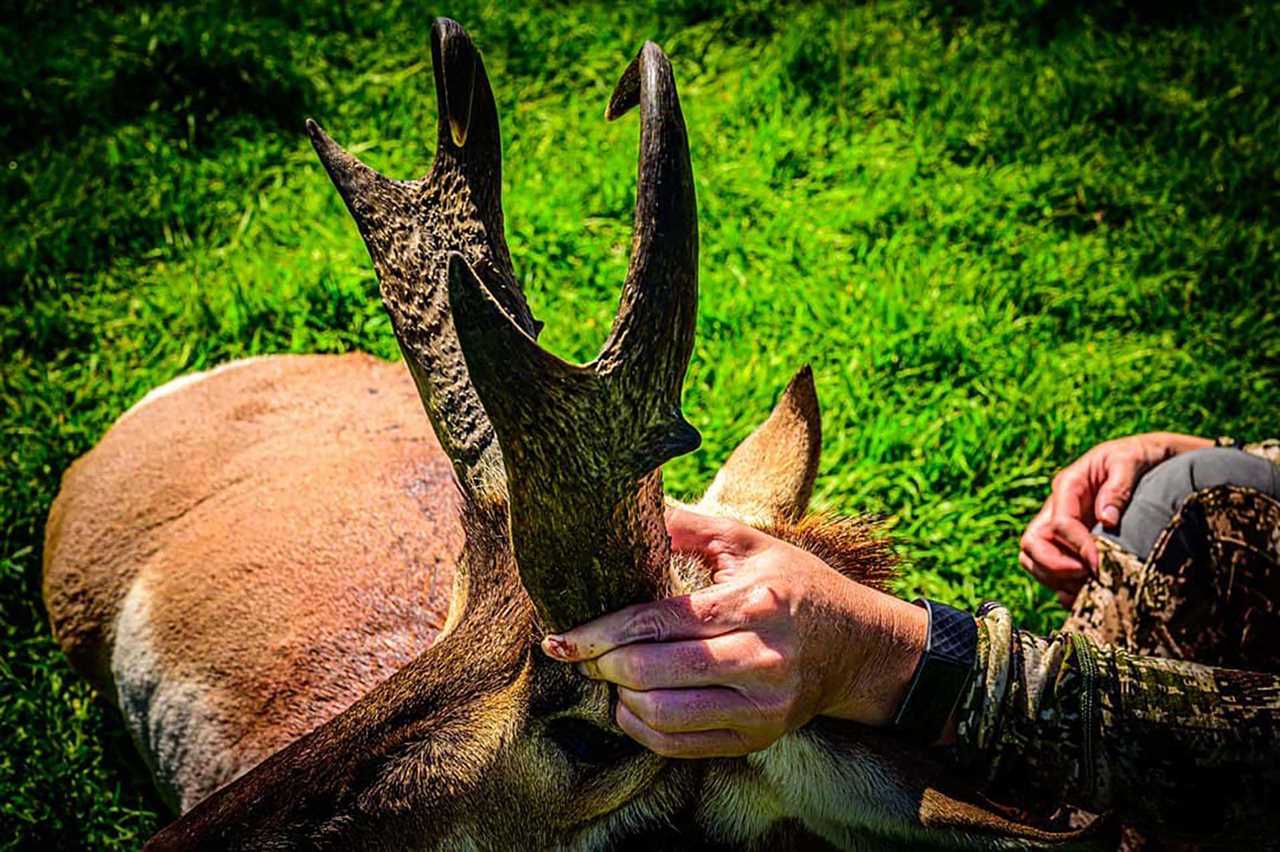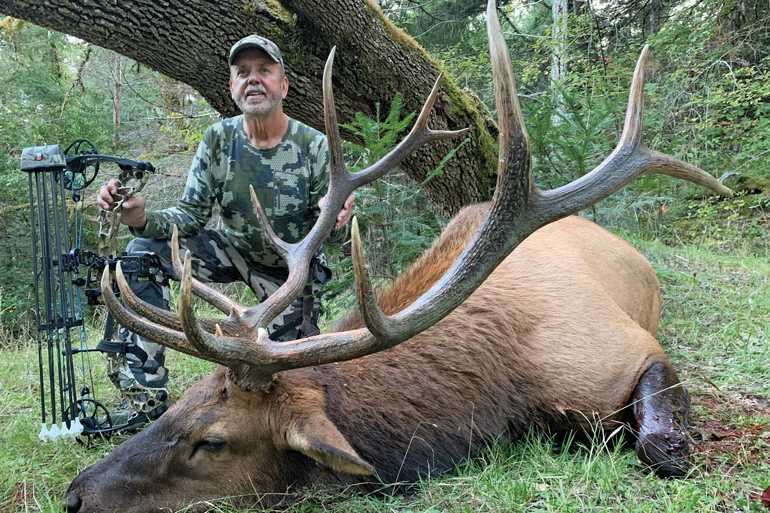Contents
A Complete Guide to Hunting Big Game Animals: Your Ultimate List and Tips
When it comes to big game animals, few creatures command the awe and respect that the tiger, rhino, elephant, giraffe, buffalo, hippopotamus, leopard, and lion do. These majestic animals, found in various regions around the world, have captivated both hunters and wildlife enthusiasts for centuries.
The tiger is perhaps the most iconic and revered of all big game animals. With its powerful build, striking coat, and exceptional hunting prowess, the tiger is a symbol of strength and beauty. Hunting the tiger is a challenging endeavor, as these elusive predators are known for their stealth and agility.
Another magnificent creature on this list is the rhinoceros. Known for its thick skin and iconic horn, the rhino has been hunted for centuries for its valuable horn, which is believed to have medicinal properties in some cultures. The importance of conservation efforts to protect this endangered species cannot be overstated.
The elephant, the largest land animal, is a symbol of power and intelligence. Elephants carry a certain air of majesty as they roam through the grasslands of Africa and Asia. Hunting elephants is a highly regulated activity, and only a few countries allow legal hunting under strict guidelines to ensure the conservation and sustainability of these magnificent creatures.
The giraffe, with its long neck and graceful movements, is an unmistakable sight on the African savannah. Despite their towering height, giraffes are surprisingly agile and can reach incredible speeds when alarmed. Hunting giraffes is a controversial topic, with some countries allowing it under strict regulation, while others have banned it outright.
The buffalo, a formidable beast known for its strength and resilience, is a challenging game animal sought after by experienced hunters. The African buffalo, also known as the Cape buffalo, can be highly aggressive and is known to be one of the most dangerous animals in Africa.
The hippopotamus, often referred to as a “river horse,” may appear sluggish and docile, but it is one of Africa’s most dangerous and formidable creatures. Their territorial nature and powerful jaws make them a force to be reckoned with. While hunting hippos is legal in some countries, it is usually heavily regulated.
The leopard, known for its elusive nature and remarkable camouflage, is a highly sought-after trophy for hunters. These solitary and stealthy predators are adaptable to various environments, making them a challenging target for hunters. Hunting leopards requires patience, skill, and a deep understanding of their behavior.
Last but certainly not least, the lion stands as the undisputed king of the African savannah. With its majestic mane and powerful presence, the lion commands respect and admiration. Hunting lions, also known as “the big cats,” is a thrilling and dangerous pursuit that demands the utmost caution and respect for the animal.
While big game hunting has faced criticism and controversy in recent years, responsible hunting, when conducted with proper regulations and conservation efforts, can contribute to wildlife management and the preservation of these incredible animals for generations to come.
List of Big Game Animals

- Leopard
- Hippopotamus
- Lion
- Elephant
- Rhino
- Gorilla
- Giraffe
- Buffalo
Why Hunt Big Game?

Hunting big game animals such as lions, hippopotamuses, tigers, giraffes, gorillas, leopards, elephants, and rhinos offers a unique and thrilling experience for hunters. It allows them to challenge themselves physically and mentally, while also providing a deeper connection to nature and the animal kingdom.
One of the main reasons why hunters choose to pursue big game animals is the sheer thrill and excitement that comes with hunting these majestic creatures. The adrenaline rush of tracking and taking down a massive lion or tiger is unmatched, and it tests the skills and abilities of even the most experienced hunters. Hunting big game requires patience, stealth, and strategic thinking, making it a thrilling and rewarding adventure.
Another reason why hunters target big game animals is for their impressive size and strength. Giraffes towering over the savannah, elephants commanding respect with their massive tusks, and rhinos showcasing their powerful horns are all awe-inspiring sights. Hunting them requires a deep appreciation for their beauty and the opportunity to witness these incredible animals up close in their natural habitats.
Hunting big game also plays a vital role in conservation efforts. Many countries use hunting permits and fees to fund wildlife management programs, anti-poaching efforts, and habitat conservation. By participating in regulated and sustainable hunting practices, hunters contribute to the preservation and protection of these species and their habitats.
Lastly, hunting big game allows hunters to gain a greater understanding of the natural world and their place in it. It fosters a sense of respect for wildlife and the environment, as hunters learn about animal behavior, habitat dynamics, and the delicate balance of ecosystems. It encourages a deeper connection to nature and helps foster a desire to conserve and protect these incredible creatures for future generations.
In conclusion, hunting big game animals offers a thrilling and unique experience that challenges hunters physically and mentally. It provides an opportunity to witness the awe-inspiring beauty of animals such as lions, tigers, giraffes, gorillas, leopards, elephants, and rhinos while contributing to conservation efforts. Ultimately, hunting big game can lead to a deeper connection to nature and a greater understanding of our place in the animal kingdom.
Where to Hunt Big Game?

If you are an adventurous hunter looking for the thrill of big game hunting, there are several places around the world where you can pursue some of the most iconic and majestic creatures. From the vast plains of Africa to the dense jungles of Asia, here are some of the top destinations for hunting big game:
- Africa: With its diverse wildlife and expansive savannahs, Africa offers some of the best opportunities for hunting big game. Countries like South Africa, Zimbabwe, Tanzania, and Namibia are known for their abundance of species such as giraffe, rhino, lion, leopard, elephant, and hippopotamus.
- Asia: The dense jungles of Asia are home to unique and elusive species like the tiger and the leopard. Countries like India, Nepal, Bangladesh, and Bhutan offer exciting opportunities for hunting these magnificent animals.
- North America: North America is known for its thriving population of big game animals. The United States and Canada offer a wide range of hunting opportunities for species like the black bear, moose, and elk.
It’s important to note that hunting big game is regulated in most countries to ensure the conservation of these species. Before embarking on your hunting trip, make sure to research and comply with the local hunting laws and regulations.
Remember, hunting should always be done responsibly and ethically, respecting the animals and their habitats.
Africa

Africa is home to a wide variety of big game animals, making it a popular destination for hunters from around the world. Some of the most iconic species found in Africa include the giraffe, tiger, hippopotamus, rhino, buffalo, gorilla, elephant, and lion.
The giraffe is known for its long neck and elegant appearance, and hunting one can be a thrilling experience. Tigers are native to Asia, but can also be found in parts of Africa, particularly in countries like South Africa and Zimbabwe. Hunting a tiger requires skill and patience, as they are known for their stealth and agility.
Hippopotamuses, or hippos, are one of the most dangerous animals in Africa. They may appear docile, but can be extremely aggressive if provoked. Rhinos are another impressive animal to hunt, with their massive size and powerful horns.
Buffalo are known for their strength and resilience, and a hunt for a Cape buffalo is considered a challenging and rewarding experience. Gorillas are not typically hunted for sport, as they are an endangered species. However, gorilla trekking is a popular activity in countries like Uganda and Rwanda.
The African elephant is one of the largest and most powerful animals on the continent. Hunting elephants is highly regulated and requires a special permit. Finally, the African lion is the king of the savannah and a symbol of power and majesty. Lion hunting is a controversial topic, and regulations vary depending on the country.
When hunting big game in Africa, it is important to be knowledgeable about local regulations and to hunt responsibly. Many countries have conservation programs in place to protect these animals, and it is crucial to support these efforts and hunt ethically.
North America

Buffalo – North America is home to the American bison, often referred to as buffalo. They can be found in national parks and wildlife preserves.
Leopard – North America is not home to leopards. They are typically found in Africa and parts of Asia.
Tiger – North America is not home to tigers. Tigers are native to Asia.
Giraffe – North America is not home to giraffes. They are native to Africa.
Rhino – North America is not home to rhinos. Rhinos are typically found in Africa and parts of Asia.
Lion – North America is not home to lions. Lions are native to Africa.
Elephant – North America is not home to elephants. Elephants are typically found in Africa and parts of Asia.
Asia

In Asia, you can find a wide variety of big game animals to hunt. From the majestic lion to the powerful rhino, there is no shortage of thrilling game to pursue. The Asian elephant, known for its intelligence and strength, is also a popular target for hunters.
The giraffe, with its long neck and graceful movements, can also be found in certain parts of Asia. Hunting a giraffe requires skill and precision, as they can be quite challenging to track and approach.
Another impressive animal found in Asia is the hippopotamus, known for its massive size and territorial nature. Hunting a hippo is a dangerous endeavor, as they are capable of charging at high speeds and are known to be extremely aggressive.
When it comes to big cats, Asia is home to the majestic tiger and elusive leopard. These predators require patience and stealth to hunt successfully. The tiger is known for its striped coat and powerful pounce, while the leopard’s agility and camouflage make it a formidable adversary.
Last but not least, the water buffalo is a coveted big game animal in Asia. These massive beasts can weigh up to 2,000 pounds and are known for their strength and resilience. Hunting a water buffalo requires skill and determination, as they can be incredibly dangerous when cornered.
Tips for Hunting Big Game

When it comes to hunting big game, such as rhinos, tigers, hippopotamuses, giraffes, gorillas, leopards, buffaloes, and elephants, it’s important to be well-prepared and educated. Here are some valuable tips to consider:
1. Study the animals: Before setting out on a hunt, learn as much as possible about the specific big game animal you are targeting. Understand their behavior, habitats, and movement patterns.
2. Plan your strategy: Once you have familiarized yourself with the animal, develop a solid plan. Consider factors such as weather conditions, terrain, and potential obstacles.
3. Choose the right gear: Make sure to select appropriate gear for your specific hunting needs. This includes weapons, ammunition, camouflage, clothing, and other essential equipment.
4. Practice your skills: Regularly practice your shooting and tracking skills to ensure accuracy and proficiency. Familiarize yourself with different shooting positions and learn how to track big game effectively.
5. Respect local regulations: Always comply with local hunting regulations and obtain the necessary permits and licenses. This ensures the sustainability of big game populations and helps conserve their habitats.
6. Hunt ethically: When hunting big game, prioritize ethical hunting practices. Focus on clean, efficient kills and avoid taking unnecessary risks or causing undue suffering to the animals.
7. Be patient and observant: Big game hunting requires patience and careful observation. Take your time to scout for signs of animal activity, such as tracks, droppings, or feeding areas.
8. Stay safe: Safety should be a top priority during big game hunts. Be aware of your surroundings, follow firearm safety protocols, and carry necessary safety equipment, such as a first aid kit.
9. Respect the animal: Show respect for the animal you are hunting by utilizing as much of it as possible. Properly field dress the animal and make use of the meat, hide, and other valuable parts.
10. Preserve the memories: Lastly, don’t forget to capture the memories of your big game hunt. Take photographs, journal your experiences, and share your stories with others who appreciate and understand the pursuit.
By following these tips, you can increase your chances of having a successful and responsible big game hunting experience. Remember to always prioritize safety, ethics, and respect for the animals and their habitats.
Choosing the Right Weapon

When it comes to hunting big game animals, choosing the right weapon is crucial. Different animals have different characteristics and require different approaches when it comes to hunting. Below are some considerations to keep in mind when selecting a weapon for hunting some of the most challenging big game animals: lion, elephant, buffalo, rhino, tiger, gorilla, leopard, and hippopotamus.
Lion: The lion is a powerful predator, and hunting one requires a firearm that can deliver powerful and accurate shots. A rifle chambered in a large caliber such as a .375 H&H Magnum or .416 Rigby is recommended. These rifles provide the stopping power necessary to take down a lion in a single shot.
Elephant: Hunting elephants is not for the faint of heart. These massive creatures require a heavy caliber rifle that can penetrate their thick hides and large bones. Calibers such as .458 Lott or .505 Gibbs are commonly used for elephant hunting.
Buffalo: Known for their size and toughness, hunting buffalo requires a rifle that can handle the challenge. Popular calibers for buffalo hunting include .375 H&H Magnum, .416 Rigby, and .458 Winchester Magnum.
Rhino: Rhino hunting is highly regulated and only allowed in specific circumstances. If you are fortunate enough to have the opportunity to hunt a rhino, a powerful rifle such as a .375 H&H Magnum or .416 Rigby is recommended.
Tiger: Tigers are formidable predators, and a well-placed shot is essential for a successful hunt. A rifle chambered in a powerful caliber such as .375 H&H Magnum or .416 Rigby is recommended for tiger hunting.
Gorilla: Gorilla hunting is illegal and unethical. They are endangered species and hunting them is strictly prohibited.
Leopard: Leopards are elusive and quick, requiring a rifle that offers both accuracy and stopping power. Calibers such as .375 H&H Magnum, .416 Rigby, or .458 Winchester Magnum are commonly used for leopard hunting.
Hippopotamus: Hunting a hippopotamus requires a rifle powerful enough to penetrate their thick skin and bones. Calibers such as .458 Winchester Magnum or .416 Rigby are suitable choices.
Remember, selecting the right weapon for hunting big game animals is essential for the safety of both the hunter and the animal. Always make sure to follow local laws and regulations when planning your hunt.
Camouflage and Concealment

When it comes to hunting big game animals, one of the most important skills hunters need to master is camouflage and concealment. To effectively pursue animals such as buffalo, leopard, rhino, tiger, lion, gorilla, elephant, and giraffe, hunters must blend in seamlessly with their surroundings.
Camouflage clothing and gear play a crucial role in achieving this goal. Hunters should invest in high-quality camouflage patterns that match the specific environment they will be hunting in. For example, a tiger stripe pattern might work well in dense jungle areas, while a desert camouflage pattern would be more suitable for hunting in arid plains.
Aside from clothing, hunters should also consider using natural elements to enhance their concealment. This can include applying mud or earth tones to the face and exposed skin, or making use of natural foliage and branches to construct blinds or ghilie suits.
Moving slowly and silently is another key aspect of effective camouflage and concealment. Big game animals have excellent senses and can easily detect even the slightest movements or sounds. Hunters should practice being patient and minimizing any unnecessary movements or noises to increase their chances of a successful hunt.
Finally, it’s worth noting that understanding the behavior and habitat of the specific animal being hunted is crucial for successful camouflage and concealment. Each animal has its own unique characteristics and preferences, and hunters need to adapt their strategies accordingly. For example, a leopard prefers densely vegetated areas, while a buffalo tends to graze in open plains. By studying the habits of these animals, hunters can position themselves in the most advantageous spots for concealment.
In conclusion, mastering the art of camouflage and concealment is essential for hunting big game animals. By using proper camouflage clothing, blending with the environment, moving stealthily, and understanding the behavior of the targeted animals, hunters can greatly increase their chances of a successful hunt.
Tracking and Scouting

Tracking and scouting are essential skills for successful big game hunting. Whether you are hunting a hippopotamus, tiger, leopard, lion, buffalo, giraffe, rhino, or gorilla, knowing how to track and scout can greatly increase your chances of finding and approaching these elusive animals.
When tracking big game, it is important to look for signs such as footprints, droppings, broken branches, or disturbed vegetation. These indicators can help you determine the animal’s presence, direction, and speed. Additionally, studying the animal’s behavior and habits can provide valuable insights into its movement patterns and preferred habitats.
Scouting involves exploring the hunting area before the actual hunt to identify potential locations where the target animal may be found. This can be done by hiking, using binoculars or spotting scopes, or setting up trail cameras. Pay attention to the animal’s feeding, drinking, and resting areas, as well as any popular trails or watering holes.
It is also important to consider the time of day and weather conditions when tracking and scouting. Many big game animals are more active during the early morning and late afternoon hours, so plan your tracking and scouting activities accordingly. Moreover, certain weather conditions, such as rain or strong winds, can make tracking more challenging due to the potential for washed-out tracks or noise disturbances.
Lastly, it is crucial to approach tracking and scouting with patience and respect for the animals and their habitat. Take the time to understand their behaviors and learn from their movements. This will not only enhance your hunting skills but also promote ethical and sustainable hunting practices.
- Track for signs such as footprints and droppings
- Study animal behavior and habits
- Explore the hunting area for potential locations
- Pay attention to feeding, drinking, and resting areas
- Consider the time of day and weather conditions
- Approach tracking and scouting with patience and respect
Legal and Ethical Considerations

Hunting big game animals has always been a controversial topic, and it is important to understand the legal and ethical considerations before embarking on a hunting trip. Many nations have established laws and regulations regarding hunting in order to protect endangered species or ensure sustainable hunting practices.
When it comes to hunting big game, certain animals, such as the rhino, tiger, leopard, buffalo, hippopotamus, gorilla, giraffe, and elephant, require special permits and licenses to hunt legally. These regulations aim to prevent overhunting and preserve the populations of these iconic species for future generations.
In addition to legal considerations, ethical hunting practices should also be taken into account. Ethical hunters prioritize fair chase, which means giving animals a sporting chance and not using unfair advantages or methods. This includes respecting hunting seasons and bag limits, as well as using appropriate weapons and equipment, ensuring a quick and humane kill.
Furthermore, ethical hunters also consider the impact of their actions on the environment and local communities. They respect private property rights and obtain permission from landowners before hunting on their land. They also strive to minimize waste by utilizing as much of the harvested animal as possible, such as using the meat for food and donating any excess to local communities or conservation efforts.
By understanding and adhering to both legal and ethical considerations, hunters can contribute to the conservation of big game animals while also enjoying a fulfilling and responsible hunting experience.
| Species | Legal Considerations |
|---|---|
| Rhino | Special permits and licenses required |
| Tiger | Special permits and licenses required |
| Leopard | Special permits and licenses required |
| Buffalo | Special permits and licenses required |
| Hippopotamus | Special permits and licenses required |
| Gorilla | Special permits and licenses required |
| Giraffe | Special permits and licenses required |
| Elephant | Special permits and licenses required |

A skilled hunter, dedicated conservationist, and advocate for ethical practices. Respected in the hunting community, he balances human activity with environmental preservation.
